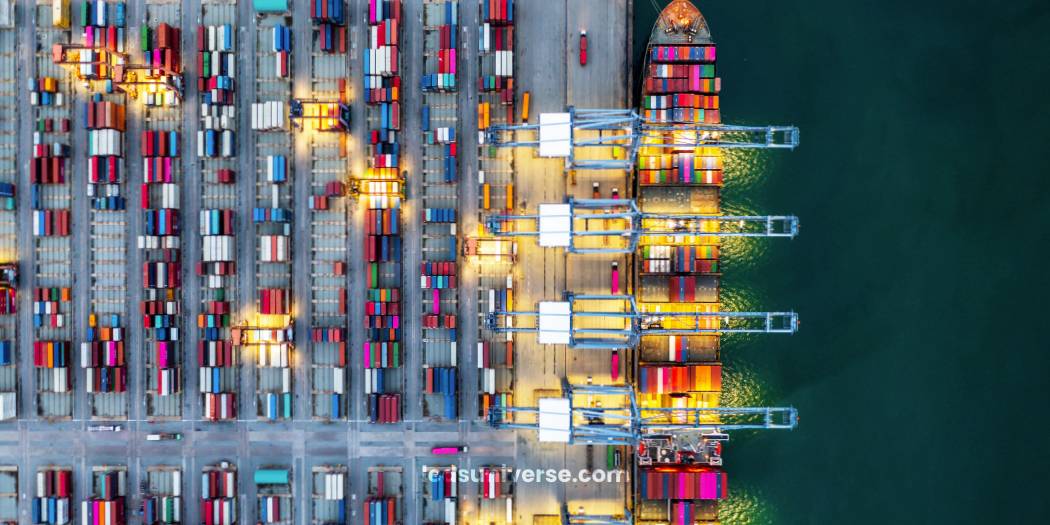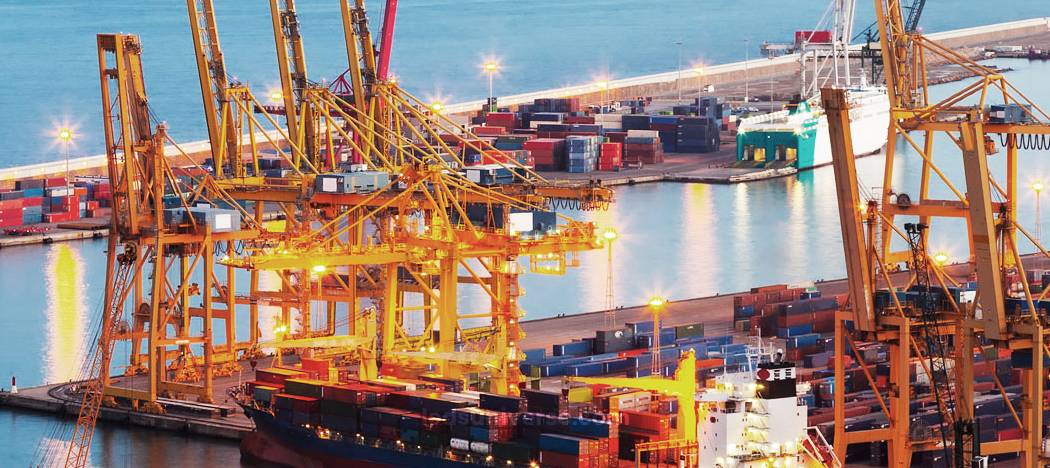The development and maintenance of ports around the world require careful consideration of both environmental and economic factors. As the demand for sustainable practices grows, solar-powered solutions have emerged as an innovative and effective way to address the lighting needs of seaports. By integrating solar seaport lighting, ports can not only reduce their carbon footprint but also experience long-term financial savings and improved safety. This approach aligns with the global push for sustainability and supports the operational demands of modern ports.
Table of Contents
ToggleEnvironmental Benefits of Solar Seaport Lighting
One of the most compelling reasons for choosing solar lighting for seaports is its contribution to environmental sustainability. Ports are often located in coastal regions, where they are exposed to sunlight for a significant portion of the day. Solar-powered systems take advantage of this natural resource, reducing the need for fossil fuels.
Reduction of Carbon Footprint
One of the most significant environmental advantages of solar-powered lighting at seaports is its potential to significantly reduce carbon emissions. Traditional lighting systems that rely on electricity from fossil fuels are major contributors to air pollution and the depletion of natural resources. Solar lighting, in contrast, generates electricity from the sun, which produces no direct emissions during its operation. By switching to solar-powered lighting, ports can greatly minimize their carbon footprint, helping to lower the overall environmental impact of their activities.
The adoption of solar lighting at seaports not only reduces greenhouse gas emissions but also supports broader national and international efforts to combat climate change. With global sustainability goals in mind, reducing reliance on fossil fuel-based energy sources is essential for reducing environmental damage. The move toward renewable energy sources like solar power helps seaports play a part in achieving these targets, demonstrating a commitment to sustainable practices while also providing a clear path to reducing emissions in a meaningful way. By decreasing the carbon output of port operations, solar lighting contributes to cleaner air and water, and mitigates the effects of global warming.
Support for Renewable Energy Initiatives

The integration of solar lighting systems at seaports complements global renewable energy initiatives and reinforces the commitment to the transition away from fossil fuels. As countries and international organizations work toward increasing the share of renewable energy in their energy mix, solar lighting offers a practical, scalable solution. Solar-powered lighting systems offer seaports the opportunity to significantly lower their reliance on traditional, grid-based electricity, furthering renewable energy adoption across the transportation and logistics sectors.
Solar-powered systems not only support global efforts to mitigate the environmental impact of industrial operations but also contribute to the broader push toward the diversification of energy sources. As international and national energy policies evolve to prioritize renewables, ports that incorporate solar energy help position themselves as leaders in green innovation. The adoption of solar lighting can serve as an example for other industries, demonstrating that clean energy solutions can be integrated into large-scale industrial operations without compromising functionality or safety. In doing so, ports also support national and global goals related to sustainability, resilience, and energy independence.
The installation of solar lighting at seaports also aligns with corporate sustainability initiatives, as many port operators increasingly emphasize environmental responsibility. By embracing renewable energy technologies, seaports can bolster their reputations as sustainable entities that prioritize green technologies. This enhanced image can not only contribute to greater community acceptance but also attract environmentally conscious partners, investors, and customers.
Economic Advantages of Solar Seaport Lighting
While the environmental benefits are a driving factor, the economic advantages of solar lighting cannot be overlooked. Seaport operators are increasingly recognizing the long-term financial gains associated with switching to solar-powered lighting. These savings come in the form of lower energy costs, reduced maintenance expenses, and a longer service life of lighting systems.
Lower Operating Costs
Traditional lighting systems at seaports rely on the continuous use of electricity, which typically comes from non-renewable energy sources such as coal, oil, or natural gas. Seaports that operate around the clock often face hefty energy bills, especially during nighttime hours when lighting is essential for safe navigation and operations. Switching to solar-powered lighting systems helps to lower these costs by reducing dependence on grid electricity.
By harnessing solar energy, seaports can reduce the overall energy consumption needed for lighting, allowing them to operate more efficiently and cost-effectively. The energy harvested from the sun can be stored in batteries during the day and used to power the lights at night. The result is a self-sustaining system that requires little or no ongoing electricity purchase, reducing energy expenses significantly. Over time, the initial investment in solar panels and associated infrastructure is paid back through savings on energy costs, making solar lighting a financially viable option in the long term.
Reduced Maintenance Costs
One of the most attractive aspects of solar-powered lighting is its low maintenance requirements. Traditional lighting systems, especially those that use incandescent or halogen bulbs, often require frequent bulb replacements and ongoing repairs. These systems also typically suffer from wear and tear due to exposure to harsh environmental conditions. In contrast, solar lighting systems are built with durability in mind.
Solar lights often use energy-efficient LED bulbs that have a much longer lifespan compared to traditional bulbs. LED lights can last up to 50,000 hours or more, meaning they rarely need replacing. Furthermore, solar lighting systems are designed with fewer moving parts, reducing the chances of malfunction. The batteries that store solar energy are designed to withstand outdoor conditions, and with regular maintenance, they can last for many years without needing replacement. This reduces the labor and costs associated with repairs and replacements, making solar lighting an attractive long-term investment for port operators.
Improved Port Safety and Security
In addition to environmental and financial benefits, solar-powered lighting enhances safety and security at seaports. Proper lighting is critical to ensure smooth, safe operations at all times, particularly during nighttime activities when visibility is reduced. Ports are often busy, dynamic environments with heavy machinery, vehicles, and personnel all working in close proximity. In such settings, poor or insufficient lighting can lead to accidents, delays, and even serious injuries. Solar lighting provides reliable illumination to mitigate these risks, offering a safer environment for both port employees and visitors.
Enhanced Visibility for Workers and Vehicles

Seaports are large and complex facilities, with multiple areas that require consistent illumination to facilitate smooth operations. From piers and cargo storage areas to transport routes and loading docks, seaports must maintain adequate lighting to ensure safe navigation for both workers and vehicles. Solar-powered lighting systems, utilizing efficient LED lights, can significantly improve visibility in these high-traffic zones. The increased brightness of solar lights reduces the chances of accidents or mishaps by providing clear sightlines, even in poorly lit or hard-to-reach areas.
In areas where large vessels dock and cranes operate, precise lighting is crucial for coordinating the movements of cargo and personnel. Solar-powered lights can be installed along docks, ramps, and critical traffic zones to create a well-lit environment that ensures safe operations around heavy machinery. By utilizing solar lighting, seaports enhance worker safety, reduce operational disruptions, and minimize the likelihood of costly accidents.
Safe Navigation for Ships and Vessels
In addition to illuminating worker areas, solar lighting plays a vital role in enhancing the navigation of ships entering and leaving port areas. The precise and well-distributed lighting offered by solar-powered systems is essential to guide vessels safely to their berths. Docking and undocking operations require accurate and consistent lighting to ensure vessels align properly with docks, reducing the risk of collision or mishap.
Solar-powered lighting systems can be installed along docking edges, breakwaters, and other strategic locations to ensure safe maneuvering in the harbor. Since solar lighting systems typically feature long-lasting LED bulbs, the lighting remains reliable even during harsh weather conditions, improving safety in challenging environments. The result is smoother, safer port operations, which ultimately improves overall port efficiency and the safety of maritime traffic.
Enhanced Security and Crime Prevention
Security is a major concern for seaports, particularly during nighttime hours when there are fewer staff on-site and the risk of theft, vandalism, and unauthorized access increases. Adequate lighting is a proven deterrent to criminal activity, and solar-powered lighting can enhance surveillance efforts by providing well-lit environments for security personnel and monitoring systems. Clear visibility ensures that suspicious activities can be detected quickly, preventing potential security breaches.
Solar-powered lighting systems can be equipped with smart technologies, such as motion sensors and timers, to ensure that lights are activated only when needed. This feature not only saves energy but also ensures that critical areas, such as perimeter fences, storage yards, and entry points, remain illuminated during times of high security risk. These intelligent systems optimize energy use without compromising safety, striking a balance between sustainability and effective security measures. By deterring criminal activity and facilitating effective surveillance, solar-powered lighting plays a significant role in maintaining a secure port environment for goods, personnel, and infrastructure.
Scalability and Flexibility of Solar Lighting Systems
One of the key advantages of solar lighting at seaports is its scalability. As ports can vary significantly in size and layout, their lighting needs are unique. Whether a port is small or large, solar-powered systems offer the flexibility to meet these diverse requirements, making them an ideal choice for ports of all sizes. The ability to customize solar lighting solutions ensures that ports can efficiently meet their lighting demands while staying within budget and maintaining sustainability goals.
Customizable Solutions for Different Port Areas
Ports are made up of various distinct areas, each with specific lighting requirements. For instance, areas with high traffic, such as loading docks and cargo handling zones, often require brighter and more powerful lighting to ensure safe operations. On the other hand, less busy sections like administrative offices or maintenance areas may only need lower-intensity lighting. Solar lighting systems can be tailored to meet these needs by adjusting the number of solar panels, battery capacity, and the type of LED lights used in each section.
By customizing solar lighting solutions for different areas, ports can ensure that they are maximizing energy efficiency. In areas with less activity, dimmer lights or lights with motion sensors can be used, reducing energy consumption when the areas are not in use. Meanwhile, high-traffic areas can be equipped with higher-intensity lights that remain reliable throughout the night. This flexibility ensures that the port is using energy efficiently while meeting safety standards, making solar lighting a sustainable solution for various port zones.
Scalability for Expanding Port Operations
As ports grow or undergo development, their energy and lighting needs can increase. Solar lighting systems are inherently scalable, meaning they can be expanded to accommodate these changes without the need for a complete overhaul. If a port expands by adding new docking areas, storage yards, or access roads, additional solar panels, batteries, and lights can be seamlessly integrated into the existing system. This scalability ensures that ports can keep up with growing operations while maintaining a consistent energy-efficient lighting system.
Rather than investing in a new, traditional lighting system for the expanded areas, port operators can simply extend their solar lighting infrastructure, making the transition smoother and more cost-effective. This approach saves on installation costs and ensures that the port maintains its commitment to sustainability while expanding operations.
Flexibility in Adaptation to Future Needs
The adaptability of solar lighting systems also makes them a future-proof solution for seaports. As technology continues to evolve and lighting requirements change, solar systems can easily be updated or adjusted. For example, advancements in solar panel efficiency or LED technology can be integrated into the existing setup, allowing the system to benefit from the latest innovations in renewable energy.
Additionally, if a port experiences changes in operational patterns—such as shifts in traffic or operational hours—solar lighting systems can be modified to respond to these changes. Whether it means installing additional lights in newly active areas or adjusting the brightness in areas with less traffic, solar lighting can easily accommodate these new requirements without disrupting the overall system.
Funding and Support for Solar Seaport Lighting
The transition to solar-powered lighting at seaports can sometimes require substantial initial investment. However, various funding opportunities and support mechanisms are available to help offset these costs. Governments, private entities, and international organizations often provide financial aid or incentives to encourage sustainable practices, such as solar energy adoption in industrial sectors like ports.
Government Incentives and Grants
Many governments offer grants, tax incentives, or rebates to encourage businesses and industries to adopt renewable energy solutions. Seaports that wish to install solar-powered lighting systems may be eligible for such programs, which can help reduce the upfront cost of installation. These incentives vary by region and can be part of broader initiatives aimed at meeting national climate goals and promoting energy efficiency.
Private Sector Investment and Partnerships
The private sector also plays a role in financing solar lighting projects at seaports. Companies specializing in renewable energy may offer funding options or enter into partnerships with port authorities to install and maintain solar lighting systems. These partnerships can help spread the financial risk and provide expertise in solar technology implementation. In some cases, private investors may be interested in supporting sustainable infrastructure projects, with the potential for long-term returns.
International Funding Opportunities
For ports in developing or emerging economies, international organizations, such as the United Nations or the World Bank, often provide funding or loans to support sustainable energy projects. These organizations aim to foster global environmental responsibility, and their funding programs can assist ports in adopting solar-powered solutions. Such funding helps build infrastructure that aligns with international sustainability targets and promotes green energy adoption worldwide.
Conclusion
Solar-powered lighting presents a sustainable, cost-effective solution for seaports, offering both environmental and financial benefits. By reducing carbon footprints and energy costs, it supports the shift toward renewable energy. Additionally, solar lighting enhances safety by improving visibility for workers, vessels, and security, ensuring smoother operations and greater security.
Its scalability and adaptability make it ideal for ports of all sizes, allowing systems to grow and evolve alongside port expansions. As ports strive for more sustainable practices, solar lighting provides an efficient, flexible, and reliable way to meet future needs while contributing to a greener, more secure environment.
